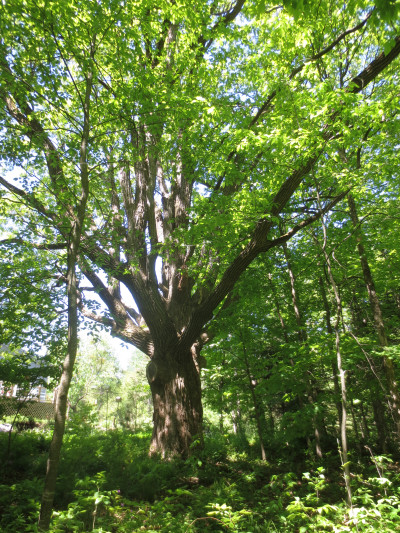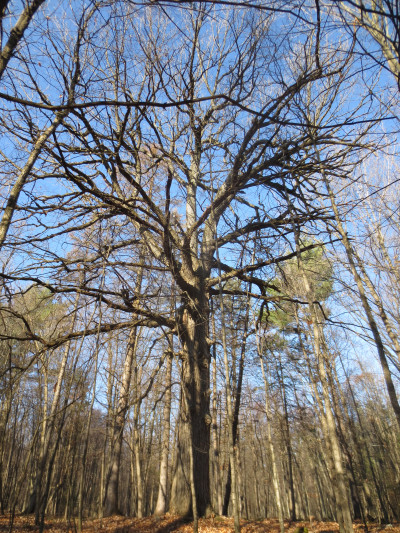by Neil Carleton
If big trees could talk, there would be some remarkable tales to hear. With the arrival of European settlers in our area, the awesome silence of the woods was broken by the ring of axes and the rhythm of crosscut saws. The forest floor shook as tree after tree was toppled to clear land for farming. Large sections of the landscape were also harvested to feed Europe’s growing hunger for squared timber.
In 1870 the stage was set for a summer conflagration to sweep the valley. After months of drought, rivers were running almost dry, fields were parched, the woods were tinder dry, and wetland areas had no moisture left. The wooden houses, barns, stables, and rail fences were hot in the sun.
Wide-spread fires were reported at the time in the Almonte Gazette. It was observed in the July 30, 1870, issue that the long spell of dry weather had proved disastrous to many farmers in Ramsay and neighboring townships by the prevalence of fire in the woods. A fire had raged for several days near Bennie’s Corners, destroying valuable timber, fences, and crops.
On the morning of August 17, 1870, the wind picked up. A crew was working that day near Blakeney, between Almonte and Pakenham, for the new Central Canada Railway line. The men started a fire to burn the brush they were cutting, but it got away. The wind later rose to an estimated 100 miles an hour, and the Great Fire, as it became known, devastated much of Lanark County and Carleton County.
The Great Fire passed by Almonte, missed Pakenham, then reached the outskirts of Arnprior and Fitzroy Harbour in the morning. The wind shifted in the afternoon, blowing eastward. When the fire reached the Goulbourn and Bells Corners areas, it was burning along an 11 mile front. Stittsville was burned to the ground. Bells Corners was consumed. Although the fire made it to the edge of Ottawa, the city was saved by a declining wind and coordinated firefighting efforts, including the diversion of water from Dow’s Lake to LeBreton flats.
Titled ‘Fire at Stittsville’, there was a brief paragraph in the August 27, 1870, issue of the Almonte Gazette. “It is reported in Almonte that Stittsville, a small place about 12 miles below Ashton, was completely burned up on Thursday not a house having been left standing.” The Almonte Gazette archive is available online through the website of the Mississippi Valley Textile Museum at http://mvtm.ca/museum/?page_id=2759.
In Lanark County and Carleton County, an estimated 3,000 farms were burned out. The landscape was a charred desert. Although Almonte was spared, the alvar area east of town has been known as the Burnt Lands for 143 years. The Great Fire certainly raged through there, but a few arboreal survivors are evidence that not everything perished as the flames marched eastward.

Down along the east slope of the Burnt Lands, just north of the Carroll Side Road, between the Burnt Lands Road and Upper Dwyer Hill Road, are two survivors of the Great Fire. They’re located on the property of Glenda and Alan Jones (2013 recipients of the Mississippi Mills Cultural Volunteerism Award). A significant portion of their land is provincially designated as an Area of Natural and Scientific Interest (ANSI).



- A walk through the woods to the west on November 21, 2012 led to another Great Fire survivor. A little smaller, with a circumference of 2.7 meters / 8.9 feet, this white oak is an oldie too. At both locations there were no other trees around of comparable size.


A good source of information about the Great Fire is Terence M. Currie’s 2009 book The Ottawa Valley’s Great Fire of 1870: The Nineteenth Century Press and the Reality of a Great Disaster. It’s available through both the Almonte (971.382 Cur) and Pakeham (P 971.382 Cur) branches of the Mississippi Mills Library. A former teacher at Almonte District High School, Terence Currie earned a master’s degree in history at the University of Ottawa after retiring. The research focus for his thesis was the Great Fire.
Thank you to Glenda and Alan Jones for their nomination of the Great Fire survivors on the Burnt Lands.
Do you have a notable or favourite tree? Readers are invited to submit their nominations for an honor roll of trees in our area that could be featured in future articles. You can contact me at 613-256-2018, <ve3nce@rac.ca>, or Neil Carleton, 3 Argyle Street, P.O. Box 1644, Almonte, Ontario, K0A 1A0. I look forward to hearing from you.
My volunteer columns started in March 2010, as print features, to support the tree planting and tree awareness initiatives of the Mississippi Mills Beautification Committee. The contact for the Tree Working Group is Ron Ayling, 613-256-4617. In Carleton Place, the contact for the Urban Forest / River Corridor Advisory Committee is Jim McCready, 613-257-5853.
Until the next column, you’ll find me looking for and hanging out with shady characters



